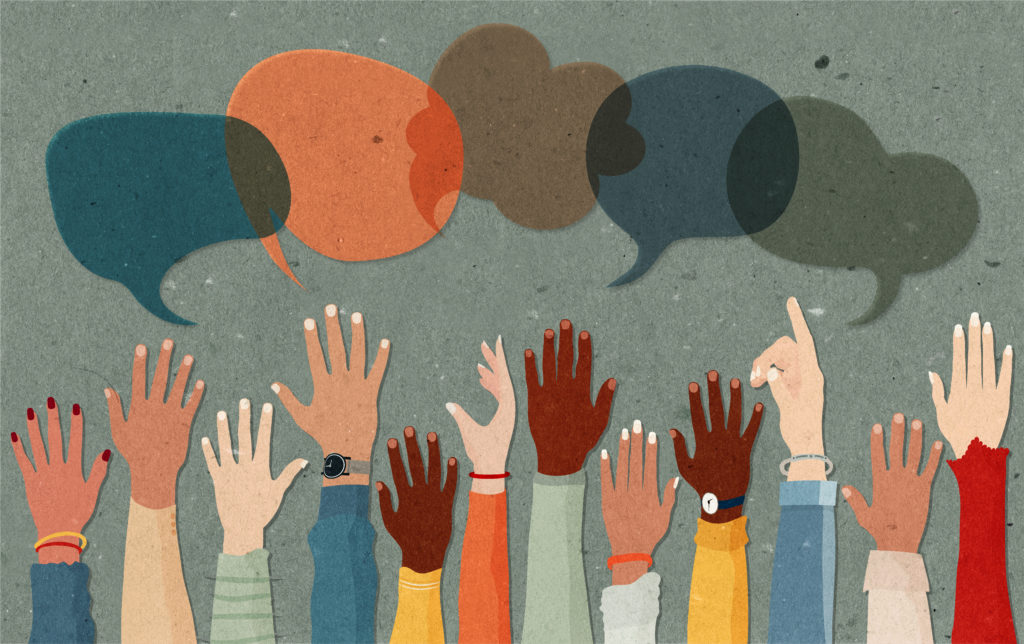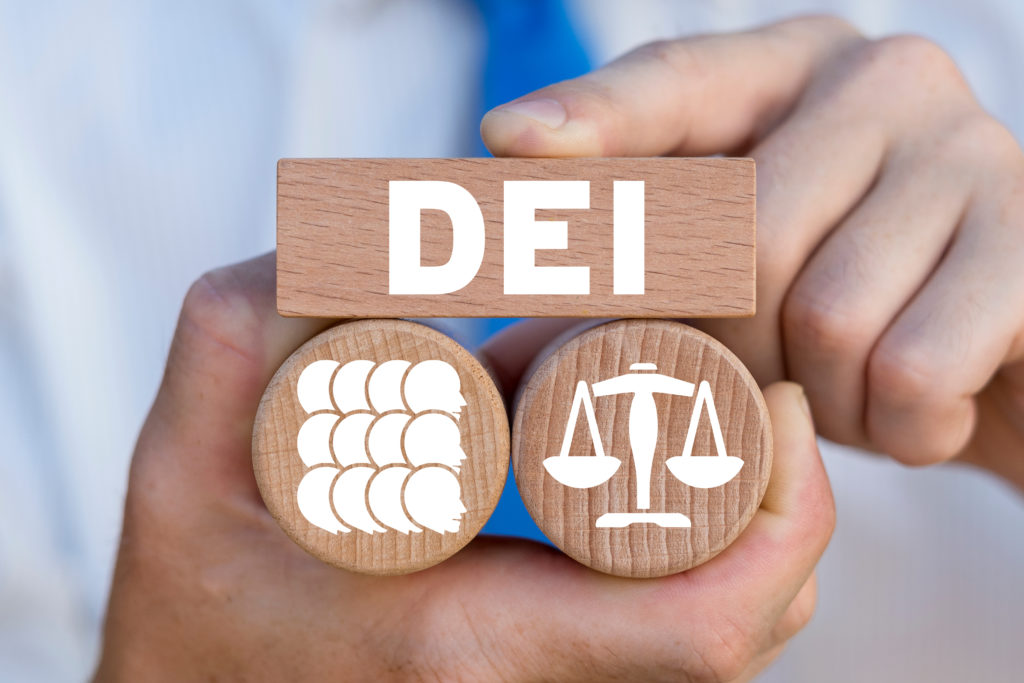 When the bell strikes eight in the morning, millions of students in classrooms cross their right hands over their hearts. Staring into the flag, adorned with 13 red and white stripes and 50 stars, they chant the lines of their daily oath, the Pledge of Allegiance: “One nation, under God, indivisible, with Liberty and Justice for all.”
When the bell strikes eight in the morning, millions of students in classrooms cross their right hands over their hearts. Staring into the flag, adorned with 13 red and white stripes and 50 stars, they chant the lines of their daily oath, the Pledge of Allegiance: “One nation, under God, indivisible, with Liberty and Justice for all.”
This standard school practice only serves to exaggerate the blatant flaws within our education system. We, as a country, demand that our students raise their hands in respect of the flag, yet we refuse to make progress towards actual implementation of “liberty and justice for all.”
The introduction of diversity, equity, and inclusion (DEI) is an important step towards amplifying the voices of those who have been historically silenced. DEI can increase cultural competency and develop skills that promote equity and foster inclusion. Diversity allows us to seek and view representation of varied identities and differences. Equity ensures fair treatment and equality of opportunity and access. Inclusion helps to build a culture of belonging, where every voice matters.
However, our educational leaders often don’t fully consider how DEI would fit in school curricula before claiming to implement it in the first place. Much like many 21st century movements that applaud performative activism (such as 2020’s #BlackoutTuesday movement which only served to silence Black activist voices), proclaiming the need for a DEI-infused curriculum is only the first step of a much larger journey. The harder task is actually devising methods for implementation, which is where the infusion of DEI into modern curricula comes in.
Kelly Hensley, high school English teacher at Mills High School, in Millbrae, California, tells a compelling story of conflicting perspectives of students and staff attempting to achieve the same goal. As a teacher, Hensley aims to combine a multitude of culturally relevant pieces for literary analysis in his classrooms. From “Ode to the Only Black Kid in Class” by Clint Smith to “Fish Cheeks” by Amy Tan, students are able to learn about a variety of cultures, contrary to a singular white view.
After a district-mandated meeting on implementing DEI into the school’s curriculum, Hensley listened to concerns of students from another school within the county regarding the reading selections taught in their English classes and their inability to see themselves in the literature. This led Hensley to a critical question on the best way to implement diversity and whether we can ever reach perfection.

Finding answers to the first part of this question on the best way to implement DEI leads to the splitting of two ideals of what I call representation of the demographic vs. comprehensive diversity. I describe representation of the demographic as based on the general population of the classroom, whether it be Asian, Hispanic, or Black. Comprehensive diversity, on the other hand, infuses all different perspectives, regardless of the makeup of the population.
On one hand, Hensley’s student demographic at Mills High School consisted of a largely Asian student body, followed by those of white and Hispanic backgrounds. He attempted to insert literary works from all different backgrounds including Chinese, African American, and Pacific Islanders. However, no matter how much effort he invested in selecting the pieces, authors, and the message behind the writing, students would oftentimes complain about not being able to see themselves in their class-required readings, thus leading to his dilemma on DEI implementation.
After consulting with other teachers and students, Hensley came to the conclusion that when comparing these two methods of DEI, it isn’t enough to simply pick and choose one to be held as a pinnacle of success. Rather, what’s more important is to combine a multitude of different strategies together.
Because, while it is important that students see themselves reflected in the readings, portraying only a limited perspective stifles other diverse perspectives. By giving into demands to view certain students’ cultures in their readings, we lose out on the multitude of stories that are then cut out of the picture. A school’s demographic population is an important factor to consider when creating curricula. But, a combination of a culturally inclusive curriculum, along with broad and new angles that a multitude of perspectives can provide, is what aggregates a well rounded education.
This concept is simple to derive but increasingly difficult to implement. It requires a balance between contrasting sides.
Tamu Green, developmental psychologist and founder and CEO of the Equity and Wellness Institute, describes her vision for a diversified curriculum, focused on what both demographics and comprehensive immersion could look like, based on an interdisciplinary approach. By combining subjects such as English, history, and health, teachers can collaborate with each other to synchronize curricula, helping to display how race and racism are present in academia in all subjects.
Anti-racist education for faculty members can also provide uniform curriculum and ensure the wellbeing of all students. Green suggests incorporating more creative approaches in courses such as American history and literature to apply information to modern times while also not leading with a male narrative.
As for DEI’s place in schools, when asked about potential pushback from parents or even educators about this approach, Green emphasizes the presence of structural racism within our society today. “Its mere existence makes it impossible for it not to be a part of all of our subjects,” she states. At the end of the day, conversations alone don’t bode well for students of color. Rather, it is focused conversations on equity that help to bring everyone the same opportunities for success. At its core, this is what the foundation of our values in our schools and school districts should be built on.
As we attempt to implement DEI into our schools and curriculums, will it ever be perfect? The answer is arguably, no. The reality is that, no matter how much we try, there will always be pushback and a call for more action. The battle for DEI is a never ending, uphill battle. And, while this is a daunting concept, fraught with unpredictability, diversity remains important to our societies. An end of imperfection is actually a positive in itself. The unending need to do better, be better, and implement improved curricula is what pushes us forward rather than backwards. By acknowledging the possibilities of improvement, we commit ourselves to always striving towards progress.
Our alternative is the current reality that is still smothered in black and white without any of the brilliance that color provides. DEI’s role in our schools is both to allow us to acknowledge our nation’s roots in violence, pain, and suffering, as well as the beauty of our diverse cultures. By stifling conversation on systemic issues and essentially preventing progress from taking place, we run from history itself.
The only way our country can move beyond a divisive and painful past and ultimately move forward and teach children and future generations to do the same, is to acknowledge the power of our collective differences. By tackling our issues head on, one day, we may be able to create meaningful, positive change, culminating in a world where the American flag becomes a true symbol of peace, prosperity, and does in fact represent liberty and justice for all.
